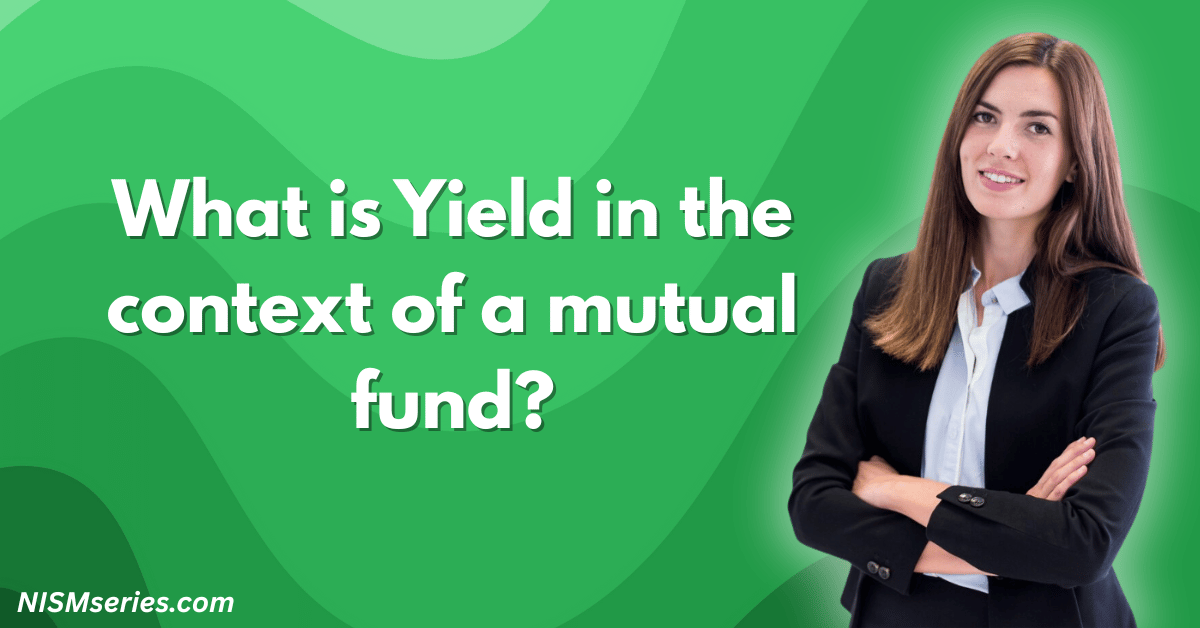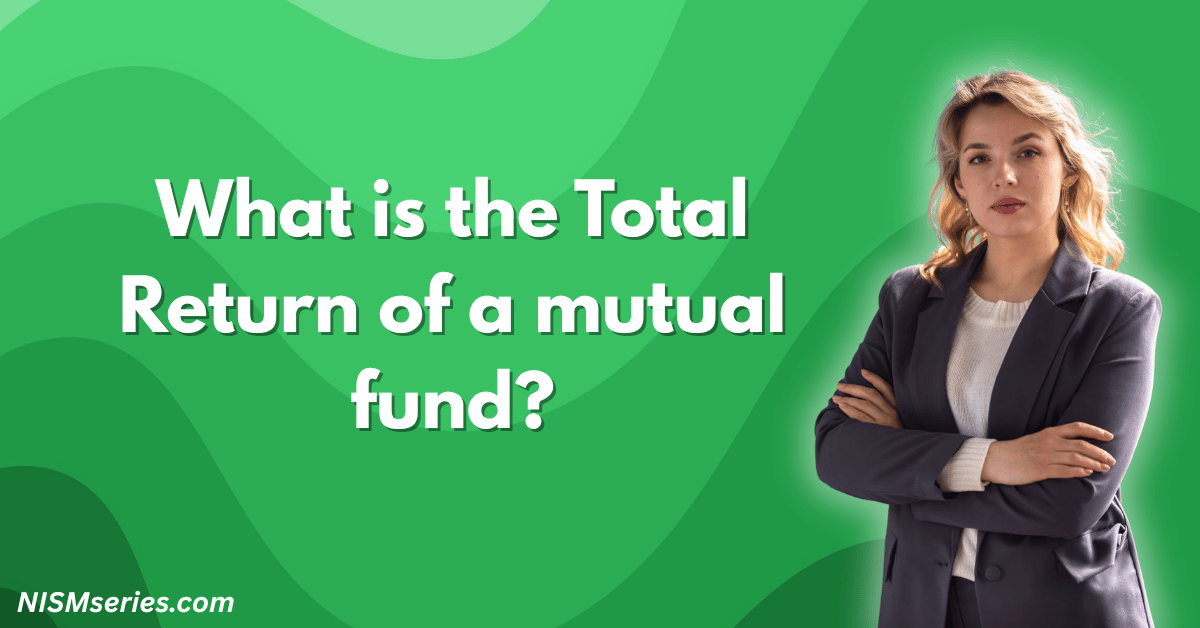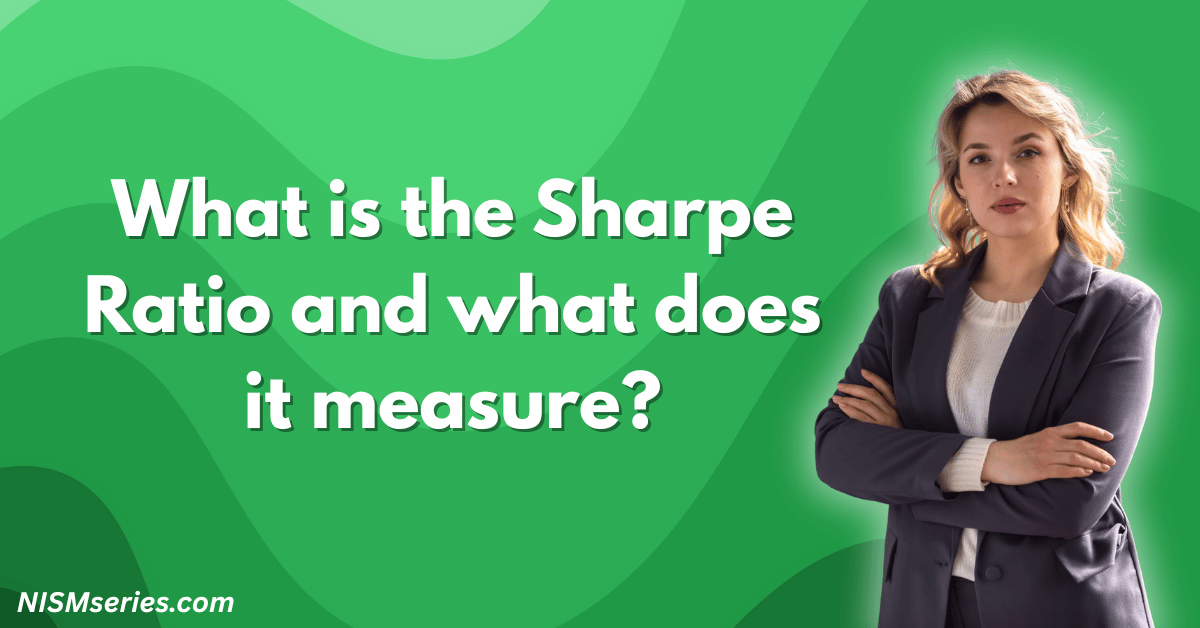Yield is a simple idea. In a mutual fund, it’s the money the fund earns. It is shown as a percentage of the fund’s price, which is called NAV. Yield only counts the income part, like dividends and interest. It does not count any profit or loss from price changes.
Yield is a very important number for any investor. It shows how much income a fund can make for you. Dividend yield funds are very popular now. They manage over ₹26,050 crore. This shows that people want investments that give them a regular income. A fund’s yield tells you the cash you will earn. This money comes from its dividend payout or from interest payments.
Table of Contents
Understanding Mutual Fund Yield Fundamentals
How Does Yield Differ from Total Returns?
Yield and total return are not the same thing. Yield is only the income that a fund pays you. Total return is everything. It includes the income plus any change in the fund’s price.
Here is an easy example. A fund’s NAV goes up from ₹100 to ₹110. The fund also gives you a ₹5 dividend payout. Your total return is 15%. You gained ₹15 on your ₹100 investment. But the yield is only 5%. This is because the yield only looks at the ₹5 dividend payout. You must focus on yield if you want regular income. You must look at total return if you want overall growth.
Distribution Yield vs Dividend Yield in Funds
These two terms are different. A distribution yield includes all the payments. This means interest from bonds and dividends from stocks. A dividend yield only counts the dividend payout that comes from stocks.
SEBI has clear rules for this. A “dividend yield fund” must put at least 65% of its money in stocks that have a regular dividend payout. Half of that money must be in big, large-cap companies. These rules make sure that the fund can give you a steady income.
Types of Mutual Fund Yield and Calculations
Dividend Yield in Equity Mutual Funds
It is simple to calculate a stock fund’s dividend yield. You take the total yearly dividends for one unit. Then you divide that by the current NAV. For example, a fund pays ₹10 in dividends. One unit costs ₹200. The dividend yield is 5%.
High Dividend Yield Fund Characteristics
Funds with a high dividend yield have some things in common. The fund manager invests 70% to 80% of the money in companies that have a better dividend payout than the market index. These funds always choose big, solid companies. These companies have a long history of paying dividends.
Dividend Distribution Process in Funds
The process is easy. The fund manager collects dividends from all the stocks. Then, they give you a cash dividend payout. Or, they can use it to buy more units for you. Any dividend payout you get will have a 10% tax (TDS) taken out.
SEC Yield Calculation Method
30-Day SEC Yield Formula
The 30-day SEC yield is a common way to compare bond funds. The formula looks at a fund’s income over the last 30 days. It then figures out the yield for a full year. The formula is: SEC Yield = 2 × [((a – b) / (c × d) + 1)^6 – 1] Where:
- a = income the fund got in 30 days
- b = costs the fund had in 30 days
- c = average number of units
- d = highest price of a unit during that time
Net Investment Income Components
To get the SEC yield, you first need the net investment income. This is all the money the fund earned minus all the costs, like the manager’s fees. This makes sure the final yield is the amount you will actually get.
Distribution Yield for Bond Funds
Interest Income from Debt Securities
A bond fund’s distribution yield comes from the interest it gets from all its bonds. The Yield to Maturity (YTM) is the average yield of all the bonds the fund owns. Right now, government bonds have a yield of around 7.5% to 7.6%. This is much better than a bank FD. A bank FD only gives you 5.5% to 5.75%.
Monthly vs Quarterly Distribution Patterns
Most mutual funds pay out money every quarter or once a year. Some bond funds might pay monthly. The timing of these payments is important if you need a regular income.
Trailing Yield vs Forward Yield Metrics
A trailing yield looks at the past. It shows the real income the fund paid over the last 12 months. A forward yield tries to guess the future. It estimates the income based on the bonds the fund owns now. This difference is important when the market is changing. A forward yield gives you a better idea of what to expect now.
Factors Affecting Mutual Fund Yield Performance
Market Conditions Impact on Yield
The market has a big effect on a fund’s yield. For stock funds, the yield can change if companies change their dividend payout. This often happens in a bad market. For bond funds, interest rates are the most important thing. When rates go up, old bond prices go down. But the yield on new bonds goes up. The high interest rates right now are creating great chances for bond funds.
Fund Portfolio Composition Influence
What a fund owns decides its yield. A dividend yield fund owns stocks in areas like banking. Those companies have a good dividend payout. A fund with more value stocks will have a higher yield right now. A fund with growth stocks will have a lower yield now. But it might pay more later.
Expense Ratio Effect on Net Yield
The expense ratio is the fee you pay the fund manager. This fee is taken from the fund’s income. So, it lowers your final yield. SEBI rules limit what a fund can charge. A small fund can charge up to 2.25%. A large fund’s fee goes down to 1.05%. If you invest ₹50,000 in a fund with a 2.5% expense ratio, you pay ₹1,250 in fees each year. This cuts your yield directly.
NAV Fluctuations and Yield Correlation
A fund’s NAV and its yield are linked in a reverse way. When one goes up, the other goes down. If your fund’s NAV goes up, the yield percentage looks smaller. This is true even if the fund pays the same amount of money. If the NAV goes down, the yield percentage looks bigger. A very high yield is not always a good thing. It could just mean the fund’s price has fallen. A good yield comes from the fund making more money, not from its price going down.
FAQ
What is the difference between yield and return?
Yield is only the income you get from an investment. This includes a dividend payout or interest. Return is everything. It includes the income and any change in the investment’s price.
How is mutual fund yield calculated monthly?
To get a monthly yield, you take one month’s income. Then you multiply it to get a yearly number. The formula is: (Monthly income / NAV) x 12 x 100. Most funds report their yields every quarter or year.
Which mutual funds offer the highest yield?
Right now, bond funds with long maturity dates give the best yields. They yield around 7.5% to 7.6%. For stock funds, dividend yield funds that own big, solid companies are the best choice for a steady income.
Does high yield always mean better performance?
No, a high yield is not always a good sign. It can be a warning. It might mean the fund’s price has dropped a lot. Or its dividend payout is not something it can keep doing. You must look at the whole picture, not just the yield.
How often do mutual funds distribute yield?
Most funds pay dividends every quarter or once a year. Some bond funds might pay more often, like every month. Equity funds usually have a dividend payout after the main “dividend seasons.”



















